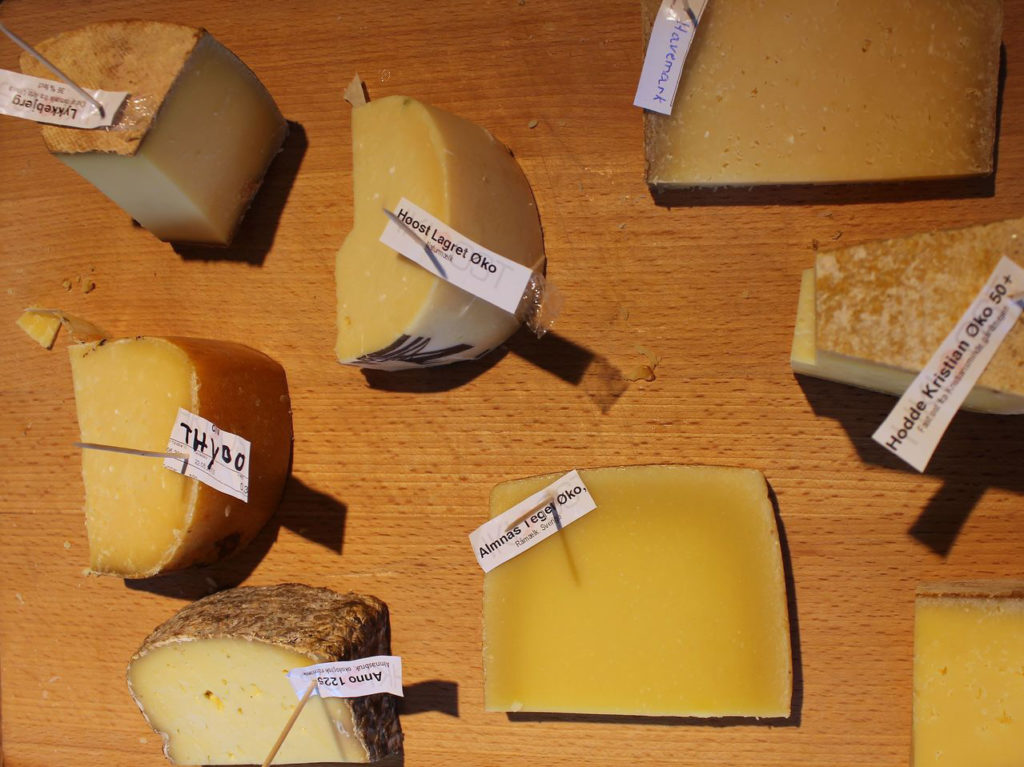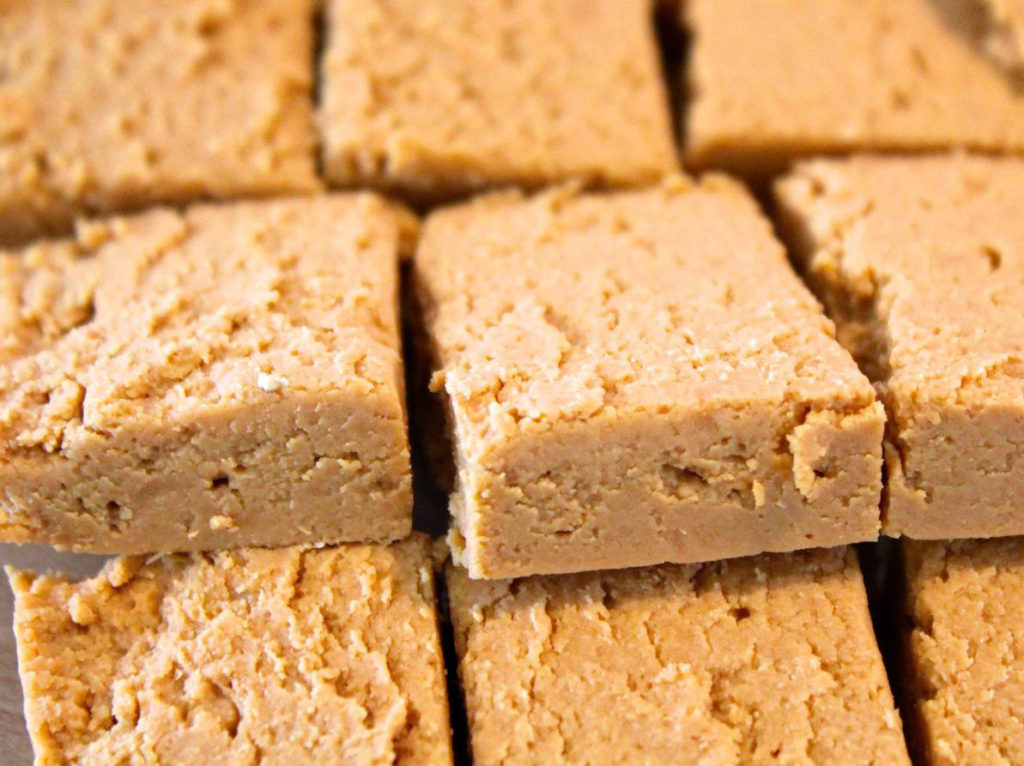posted Justine de Valicourt
Poul Larsen, a Danish cheesemonger from HKI Ost, paid us a few visits recently to share some cheeses and tell us more about the cheese industry in Scandinavia. Most were organic, and some were biodynamic. We had the pleasure to taste some very good ones. To understand more about these cheeses, we needed to look deeper into Scandinavian geography and its long history of dairy culture.
Northern Europe has the highest rate of milk consumption in the world[1], but the culture of milk and dairy differs a lot from one country to another. For example, Sweden has historically a huge consumption of hard cheese compared to Denmark, which favours soured milk, yogurt, and fresh cheese.
This variability is largely attributable to geographic factors. Sweden is a large country with a history of seasonal transhumance for pasturing. Shepherds used to be isolated for a couple of months in the summer when moving with their cattle to higher pastures. They would then milk the cows and make cheese as a way to conserve the milk for the winter season, and the best way to store a lot of milk for a long period is to concentrate it by making harder cheese.
On the other hand, Denmark is a small country with a very concentrated population. The pastures are relatively near towns and cities and the shepherds never needed to store the milk for long periods of time. They could sell the dairy a few days after collecting the milk, creating a culture of soured milk, yogurt, fresh cheese and fresh milk, consumable all year round.
Modernity, however, with industrialisation and globalisation, has complicated this otherwise simple model, bringing an interest in hard cheese to Denmark as well as an easier shepherding life in Sweden. The last few decades have seen the development of a multitude of cheese factories in Denmark, most of them influenced by the cheese cultures of other European countries like the Netherlands and Switzerland. The five Danish and three Swedish cheeses Poul brought us on his first visit were mainly of this relatively new industry.
We tried a cheese very similar to a gouda, named Høost Lagret – sweet and moist at 18 months old. Among the Swedish ones, Almnäs Tegel at26 months was close to a gruyere, and Anno 1225, to a Tomme style. Yet the ones that held our attention were a couple cheeses from Jutland: Thybo , with large crunchy crystals, great buttery flavour, and high umami taste – the kind of cheese most people like; and Hodde Kristian Øko, of semi-pasterised milk, biodynamic from only hay-fed cows – even at 15 months old, it could have waited a couple more months before consumption for more of those nutty flavours to develop.
One characteristic we noticed is that all these cheeses did not taste quite as old as we would have expected from their age, as if the aging process were slower here in the North. Could it be because of the high relative humidity in Denmark? Or the cooler climate? Or because the cheeses are more pressed? The Almnäs Tegel, for example, was quite pressed, producing an interesting sandy texture.


All these cheeses made us curious about those few very traditional hard cheeses that still exist in Sweden. It is a country that used to boast thousands of different cheese producers and a great diversity of product, though now most of these producers have either been bought up or shut down. Yet there are still a few who have a continuous practice.
One visit was barely enough for us to satisfy our questions, so Poul came back a week later so we could learn more. This time he brought some very traditional Swedish cheeses – Get-Mese, Gullbrăcka, and Oviken Dura to name a few.
The Get-Mese needs to be described a little more. There is also a Norwegian version of this brown cheese, which is made from whey and boiled for a couple of hours, as the milk proteins and natural sugars go through a Maillard reaction that develops the typical nutty, caramelised flavours, a certain sweetness, and a wood-brown colour. This one also had quite a prominent a liquorice flavour.
The Gullbrăcka interested us as well. It is a semi-hard, rectangular cheese from the Ystad region, traditionally made by monks. The cheese was only 3 and half months old, but the taste was already good, developed but not overly strong, with a hard sandy crust.
Still from Sweden, we tasted two cheeses that were delicious and less traditional. The Granbarkost is a cheese made in a cast of pine tree, similar to the Mont d’Or in France and Switzerland that is made in a spruce cast. The rim gives a distinct terpinous flavour to all the cheese, and holds it intact as the insides go gloriously runny.
The other Swedish cheese that we definitely need to relate is the Sörmlands Ädel, an exceptional blue, creamy and nutty. Similar to a Roquefort, though sweeter and from cow milk, and more mushroomy than a Gorgonzola.
Then, among the enormous selection of Danish cheeses that Poul brought, the Gedemælk Rygeost certainly needs a word. It is a quite famous cheese from Funen, a smoked fresh cheese from goat milk (Gedemælk). This process makes a cheese that is very fresh, creamy and slightly acidic, but with a potent smoky flavour coming from a fast blast near an oak-hay fire.
Finally, the most popular cheese in Denmark: Danbo. It is a commercial semi-soft cheese, quite sweet and easy-going. Yet we hadn’t met its older siblings until now – one at 20 months and another at 26. These two versions are much stronger, lightly ammoniated, but nutty and full on the palate.
Every cheese we tasted kept us grappling with how to understand the interplay between old small producers, the proud heritage in Scandinavia of dairy culture and dairy science, the various kinds of industrial production, and this burgeoning ‘neo-traditional’ style. What constitutes ‘traditional’ cheese now? When and how do some of these cheeses toy with our expectations, and perhaps lead us astray? We may be entering a sort of post-industrial food market when it comes to taste and story – but it is still uncertain to what extent this will demand changes in the actual systems of production.
It is complicated and we are not the first to struggle with these questions. But one thing is for sure: there are definitely Nordic cheeses worth eating.
